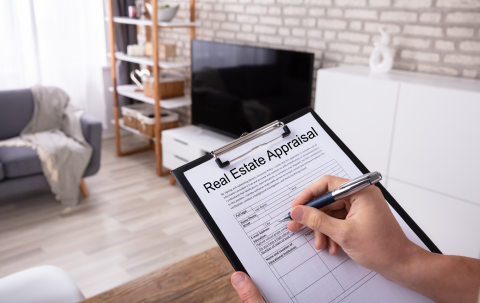This article was written by VHFA Spring Housing Fellow Christina Cramer

Housing policy and race have long been commingled in the United States. People of Color have typically had a harder time obtaining initial mortgages, home equity loans, and refinancing than their white counterparts. One significant contributing factor to this is the disparity of home appraisal values. A recent study from the Federal Home Loan Mortgage Corporation (commonly known as Freddie Mac), as well as other credible reports, finds that racism in the appraisal industry may undervaluing the homes of Black and Latino Americans compared to white homeowners. Black homeowners maintain that their homes are consistently appraised less than those of their white neighbors, resulting in diminishing their ability to build equity and further perpetuating income inequality.
Examining more than 12 million housing appraisals from Jan. 1, 205 to Dec. 31, 2021, Freddie Mac researchers found that 15.4% of majority Latino census tracts appraisal, and 12.5% of majority-Black census tracts appraisals came in below the contract price for housing assessments compared to 7.4% of appraisals in the white census tracts. The study states, “For both the Black and Latino areas, the percentage of undervalued appraisals increased as the white population percentage decreased.” Additionally, researchers found that, when taking structural and neighborhood characteristics into account, the undervalued appraisals occurred more frequently.
A Gallup and Brookings Institution study also reported that homes in majority-Black neighborhoods are likely to be valued for 23 percent less than a near identical home in a white majority neighborhood. The study examined the property value penalty that characterizes a Black-owned home in a neighborhood on three levels: actual devaluation, devaluation adjusted for structural characteristics of the home and, devaluation adjusted for structural characteristics of the home and neighborhood amenities. The study concluded that “the devaluation of majority-Black neighborhoods is penalizing homeowners in Black neighborhoods by an average of $48,000 per home, amounting to $156 billion in cumulative losses.” The negative perceptions of Black neighborhoods are shared through not only the housing market, but also the communities such as the fewer quality schools and the placement of stores.
The relationship between the appraised value and the amount of equity in the home helps determine the size of the loan and the interest rate associated with the loan. In the case of home equity loans, the appraisal is key to determining how much can be spent on a child's college education, a room addition, or other purchases that improve or promote a better quality of life. If one has an undervalued assessment, lenders will reduce the available funds.
The appraisal process is partially objective and partially subjective. Comparable home prices, condition of the house, and other factors contribute to the “science” of the appraisal. Many other factors may be assigned a high or low value in a subjective range that may have racial undertones. For many years, professional appraisal organizations have denied the link between racism and the appraisal industry. Some home sellers have resorted to pretending to be white to minimize the race effect to obtain a fair appraisal. Family photos, books written by Black authors, and other Black identifiers were removed from sight of the appraiser. Some have enlisted white friends to be present in their place during the appraisal.
The Appraisal Institute is the nation’s largest professional association of real estate appraisers. The Institute has recently acknowledged that racial bias exists in the industry and has proposed remedies to attempt to close the appraisal gap including training on unconscious racial bias, and updating profession ethics standards. On May 14th, 2021 the Appraisal Subcommittee also was approved for an independent review of industry standards with goals of the review being to “ensure that USPAP Standards and the Appraiser Criteria do not encourage or systematize bias, and that the standards and criteria consistently support or promote fairness, equity, objectivity, and diversity in both appraisals and the training and credentialing of appraisers.” Further reviews have been completed since, and have provided multiple recommendations for new best practices.
Owning a home has been demonstrated to help households increase generational wealth, and marginalized communities of color are prevented from this stability. Although these and other initiatives will not fully erase the racial wealth gap, the ability for a Black or Latino homeowner to obtain a fair and accurate real estate appraisal is a positive first step.

